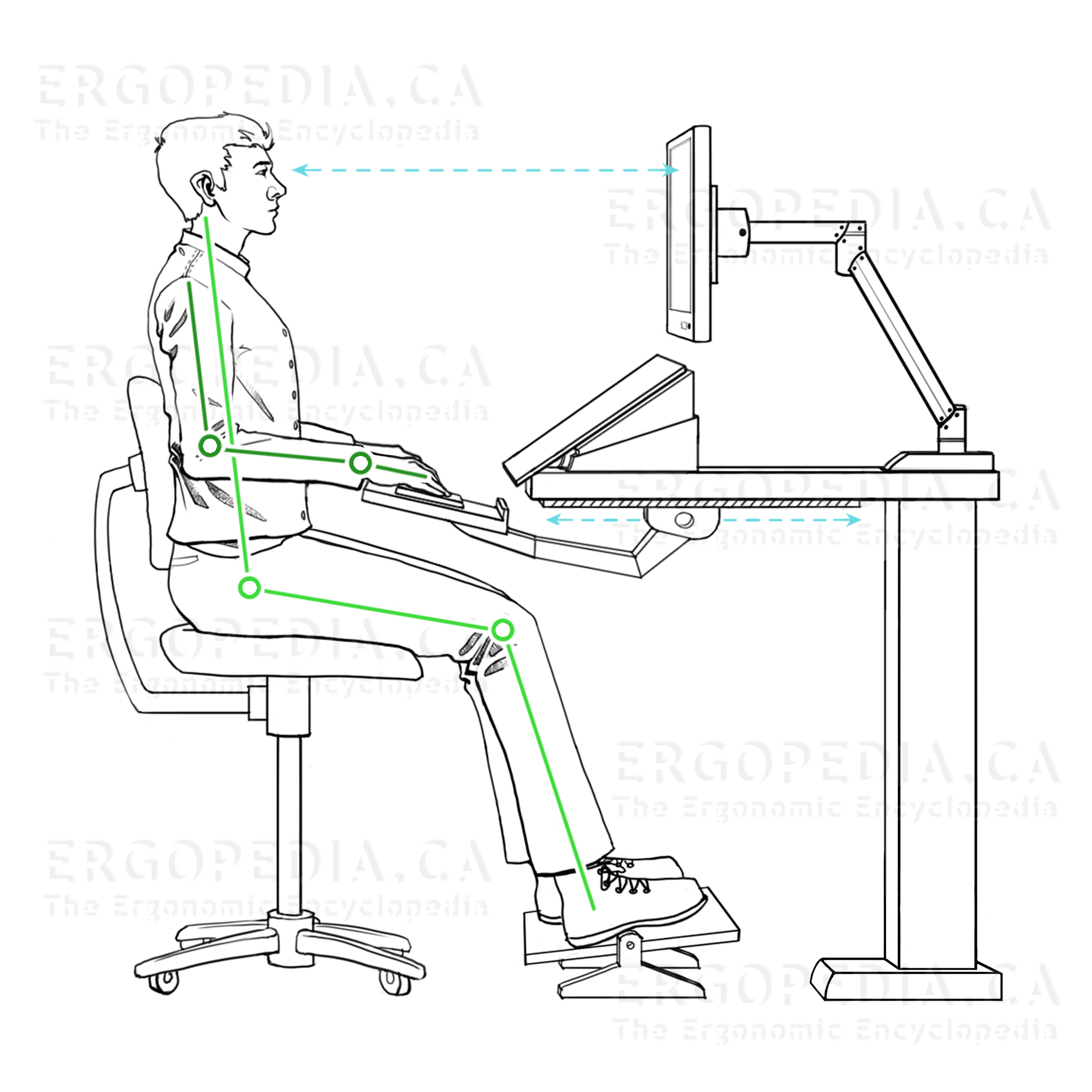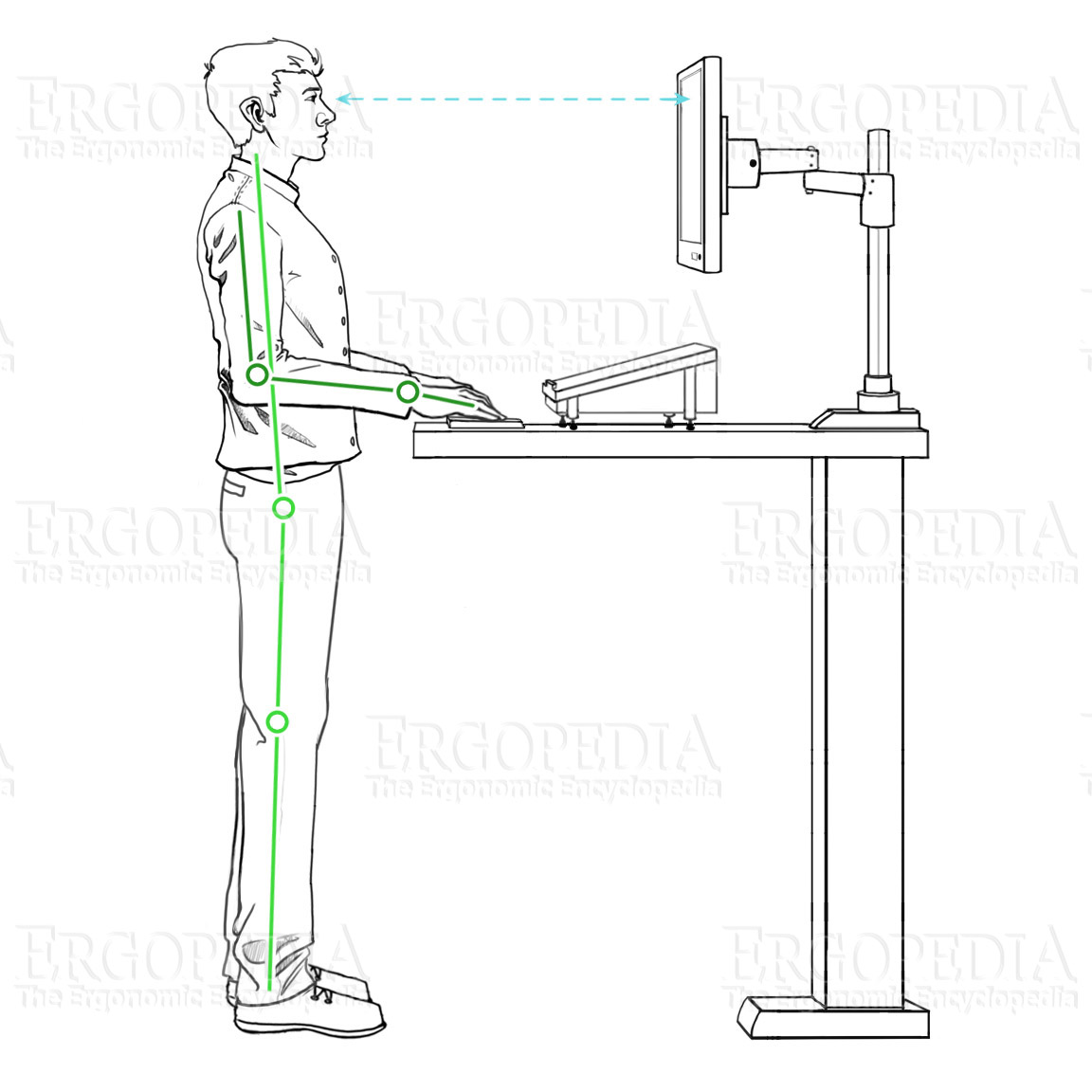
Incorrect
Work Surface Height
What is the Correct Height to Position the Work Surface?
The primary work surface (where the keyboard and mouse are
located) should be located just above the top of the thighs,
with a neutral or slightly negative inclination. This should
result in the forearms (and hands) being parallel to the ground
or slightly negative while working (as shown in the images on
this page). The upper arms should be near vertical, elbows below
the shoulders, and at rest at the sides (the anatomically
neutral position). The keyboard and mouse must be at the same
height on the same work surface as there is only one optimal
height when working.
Why is Improper Work Surface Height a Risk Factor?
...If the Worksurface is Too High
The user will be forced to raise their arms and/or shoulders
to gain access. This puts a static load on the muscles and
ligaments since they are required to be constantly engaged to
maintain position. In addition, the underside of the forearm or
wrist will experience a compression point wherever they press
against the edge of the worksurface. Finally, the wrist may have
to flex (i.e. bend downward at the wrist, or
Palmar
Flexion) to perform required tasks (keyboarding /
mousing) placing additional stress on the forearm and wrist.
...If the Worksurface is Too Low
The user is forced to lean their upper body forward or
stretch their arms away from the body, which can cause back
strain and stress to the arms while attempting to perform tasks.
In addition, the wrists will be forced to be in a position of
Wrist
Extension (i.e. be bent upward at the wrist) in
order to perform keyboarding and mousing tasks.
How Specific a Height does a Work Surface have to be to
Avoid it Being a Risk Factor?

There is a very low level of tolerance in both the wrist and
shoulders for most individuals; taller individuals usually have
increased tolerance than shorter individuals due to their longer
average arm length. As such, anything more than 1" higher or 2"
lower than the optimal height at a sitting workstation would
represent a risk factor. For standing workstations, there is
typically slightly more tolerance to a lower height, so anything
more than 1" higher or 3" lower than the optimal height at a
standing workstation would represent a risk factor.
What are the Symptoms of a Work Surface which is "Too
High" or "Too Low"?
Symptoms that may indicate that the worksurface is at an
incorrect height are strain in the arms, shoulders, wrists and
back. There is also the possibility of tension and pain
developing in the neck as the body attempts to compensate.
How can the Choice of Workstation Help to Reduce
Improper Work Surface Height?
Most standard desks have a height of 29" which is too high for
most individuals under 6'0"
.
Articulating
Keyboard Arms will allow a keyboard tray to be
adjusted below the worksurface (and sometimes above) to the
optimal height where the elbow is higher than the wrist. Another
alternative is to replace the desk with an
Adjustable
Height or Sit Stand Workstations which will adjust
not only a small keyboard tray but also elevate an entire
desktop to the ideal height for sitting, standing, and all
positions in between.
What Other Strategies can be used to Address Work
Surface Height?
Adjusting the Chair
By raising the height of the seat, it may be possible to
achieve the proper relative arm height. Note: This will usually
also require the addition of a
Foot
Rest to prevent dangling feet.
Adjusting the Worksurface
If a worksurface needs to be adjusted upwards, there are
Desk
Risers available which can elevate the worksurface.


